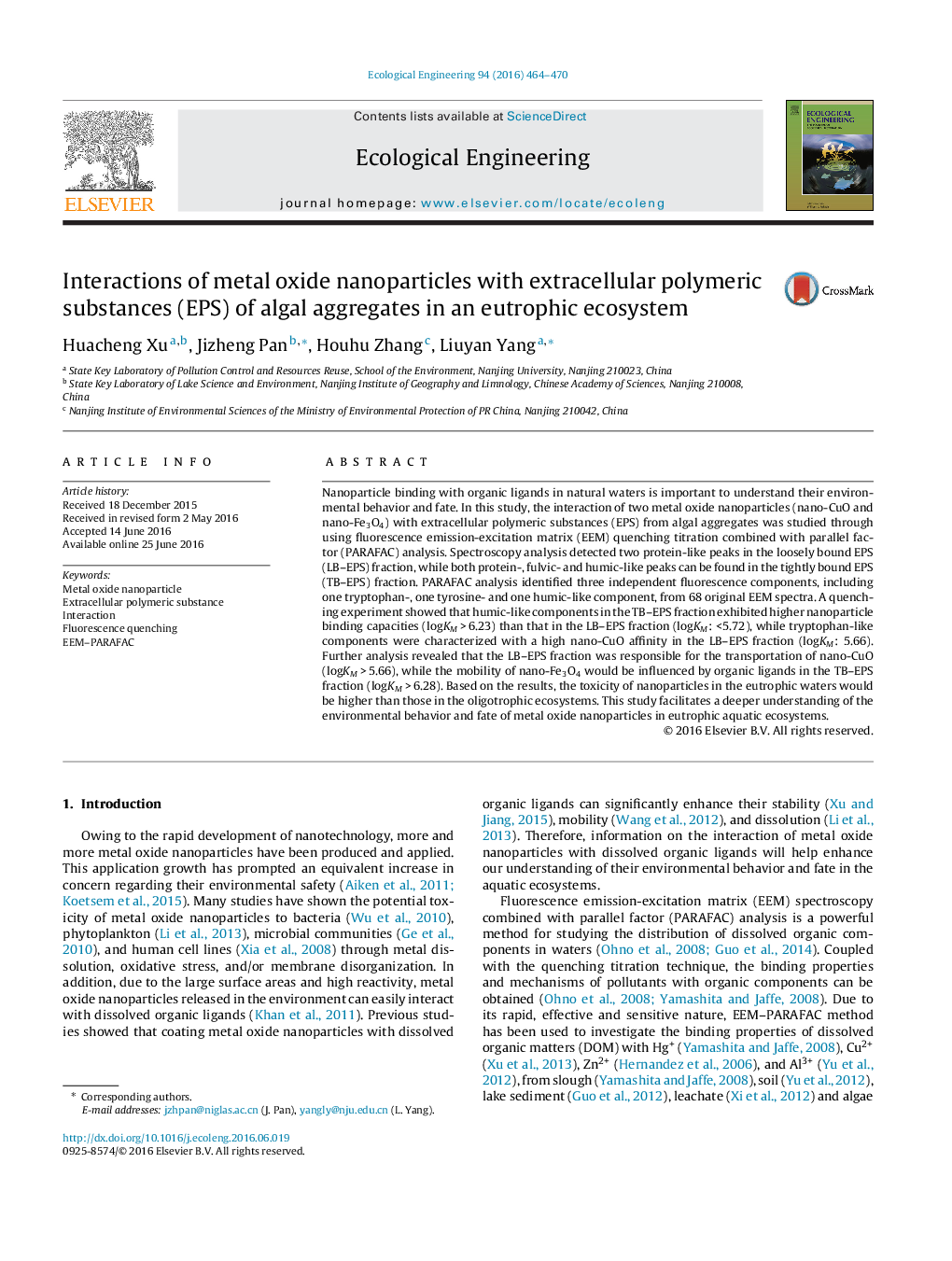| کد مقاله | کد نشریه | سال انتشار | مقاله انگلیسی | نسخه تمام متن |
|---|---|---|---|---|
| 4388573 | 1618005 | 2016 | 7 صفحه PDF | دانلود رایگان |

• Nanoparticle–EPS interaction was for the first time studied by EEM–PARAFAC technique.
• Three independent organic components were identified from all EEM spectra of EPS matrix.
• Binding potential was related to EPS fractions, organic components and nanoparticle types.
• The transportations of nano-CuO and nano-Fe3O4 would be controlled by LB– and TB–EPS, respectively.
• Toxicity of nanoparticles would be changed in eutrophic waters due to the presence of EPS.
Nanoparticle binding with organic ligands in natural waters is important to understand their environmental behavior and fate. In this study, the interaction of two metal oxide nanoparticles (nano-CuO and nano-Fe3O4) with extracellular polymeric substances (EPS) from algal aggregates was studied through using fluorescence emission-excitation matrix (EEM) quenching titration combined with parallel factor (PARAFAC) analysis. Spectroscopy analysis detected two protein-like peaks in the loosely bound EPS (LB–EPS) fraction, while both protein-, fulvic- and humic-like peaks can be found in the tightly bound EPS (TB–EPS) fraction. PARAFAC analysis identified three independent fluorescence components, including one tryptophan-, one tyrosine- and one humic-like component, from 68 original EEM spectra. A quenching experiment showed that humic-like components in the TB–EPS fraction exhibited higher nanoparticle binding capacities (logKM > 6.23) than that in the LB–EPS fraction (logKM: <5.72), while tryptophan-like components were characterized with a high nano-CuO affinity in the LB–EPS fraction (logKM: 5.66). Further analysis revealed that the LB–EPS fraction was responsible for the transportation of nano-CuO (logKM > 5.66), while the mobility of nano-Fe3O4 would be influenced by organic ligands in the TB–EPS fraction (logKM > 6.28). Based on the results, the toxicity of nanoparticles in the eutrophic waters would be higher than those in the oligotrophic ecosystems. This study facilitates a deeper understanding of the environmental behavior and fate of metal oxide nanoparticles in eutrophic aquatic ecosystems.
Journal: Ecological Engineering - Volume 94, September 2016, Pages 464–470